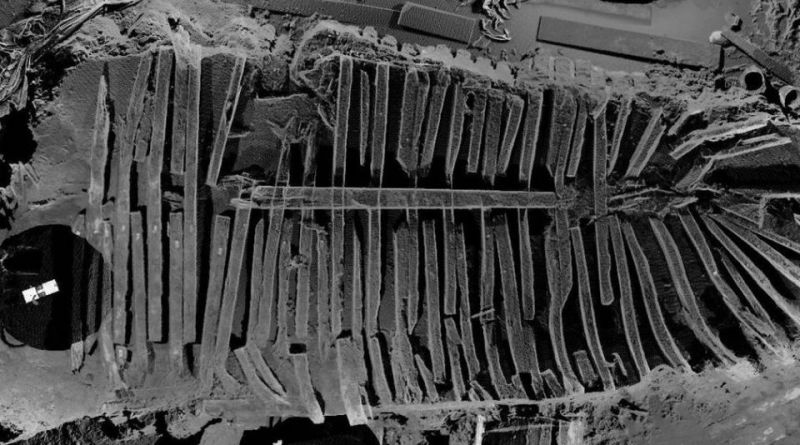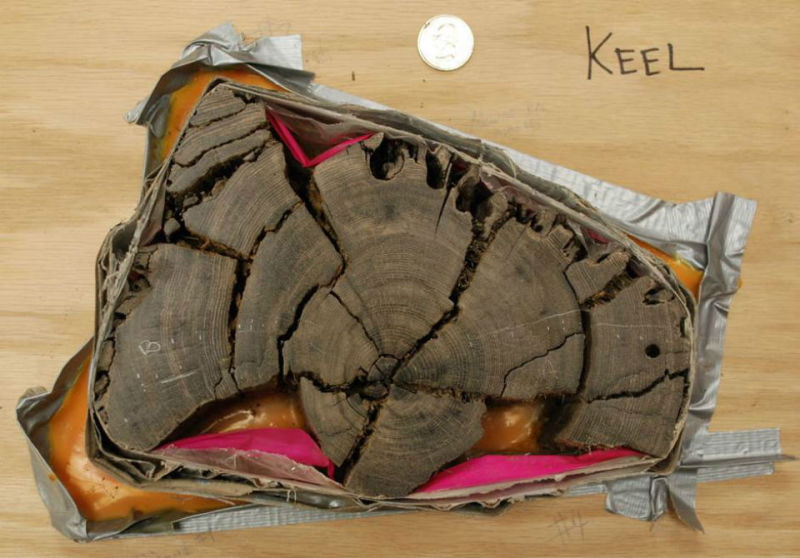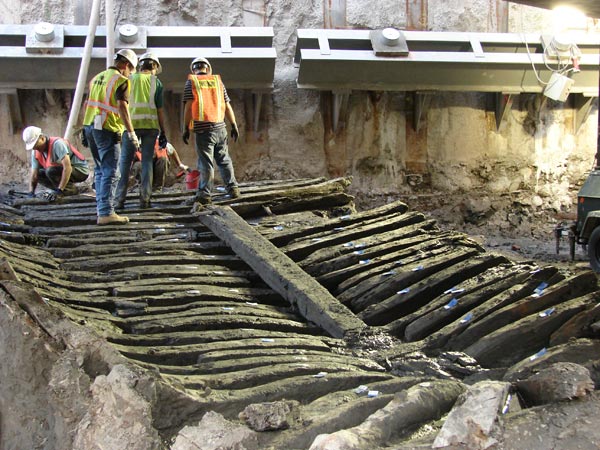On September 11th, 2001 a terrible attack on The Twin Towers in New York happened and took thousands of lives. The world was shocked. After the tragic events, clean up crews started to work in the area to prepare it for the foundations of the new “One World Trade Center”, which became the tallest building in the USA when it was finished last year.
In 2010, during this excavation and clean up process, workers found something very interesting: the hull of a large ship. The hull was buried approximately 22 feet (6.7 meters) beneath the ground. Luckily, the excavation was monitored by archeologists and the work was immediately stopped in that part of the work site until they were able to examine it. Now, the origin of the mysterious buried ship is revealed.
Archeologists gathered wood samples from the ship’s hull and determined that it is made in the late 1700s, the same period in which the declaration of independence was signed. The research was conducted at Columbia’s Tree Ring Lab. Scientists used dendro-chronological dating and provenancing, and by comparing the wood ring patterns from the ship hull with wood from historical records, they were able to pinpoint the exact date when the ship was made. The results showed that the ship was constructed in a Philadelphia shipyard around 1773.

The wood used for the ship comes from the same area in Philadelphia. The scientists then compared these samples with a wood sample from the Independence Hall and found out that the rings from both samples match.
The ship is made from the same material as the Independence Hall, the place where the founding fathers signed the Declaration of Independence and the United States Constitution. This amazing discovery was published by the researchers and they report the following in the abstract of the paper:
On July 2010, archeologists monitoring excavation at the World Trade Center site (WTC) in Lower Manhattan found the remains of a portion of a ship’s hull. Because the date of construction and origin of the timbers were unknown, samples from different parts of the ship were taken for dendrochronological dating and provenancing.
After developing a 280-year long floating chronology from 19 samples of the white oak group (Quercus section Leucobalanus), we used 21 oak chronologies from the eastern United States to evaluate absolute dating and provenance. Our results showed the highest agreement between the WTC ship chronology and two chronologies from Philadelphia (r = 0.36; t = 6.4; p < 0.001; n = 280) and Eastern Pennsylvania (r = 0.35; t = 6.3; p < 0.001; n = 280). The last ring dates of the seven best-preserved samples suggest trees for the ship were felled in 1773 CE or soon after.
Our analyses suggest that all the oak timbers used to build the ship most likely originated from the same location within the Philadelphia region, which supports the hypothesis independently drawn from idiosyncratic aspects of the vessel’s construction, that the ship was the product of a small shipyard.

This is an important discovery because only a few ships from the late 18th century have been found and not much is known about how ships were built back then. The “Manhattan Ship” offers a great insight in American shipbuilding.
As strange as it may look, there is an explanation of how the ship ended up buried under the World Trade Center. In the time when Manhattan was starting to get settled, the Hudson river used to flow there, on the exact location when the Twin Towers will later rise. The whole area was underwater. This can be seen on old 18th-century maps. As Manhattan grew, the need for buildable land became greater. In order to accommodate this need, from the mid-1700s until the mid-1800s, people started filling up the area along the Hudson River and spread the cost of Manhattan further.

It is still not certain if the ship sank by accident or it was intentionally submerged there. Very often, garbage and all kind of debris was used in the filling up process for the foundations of the new grounds of Manhattan, therefore it is highly possible the ship was used in this manner.
Oysters found on the ship’s hull suggest that the ship was still floating in the Hudson River before it was eventually covered with trash and rubble.